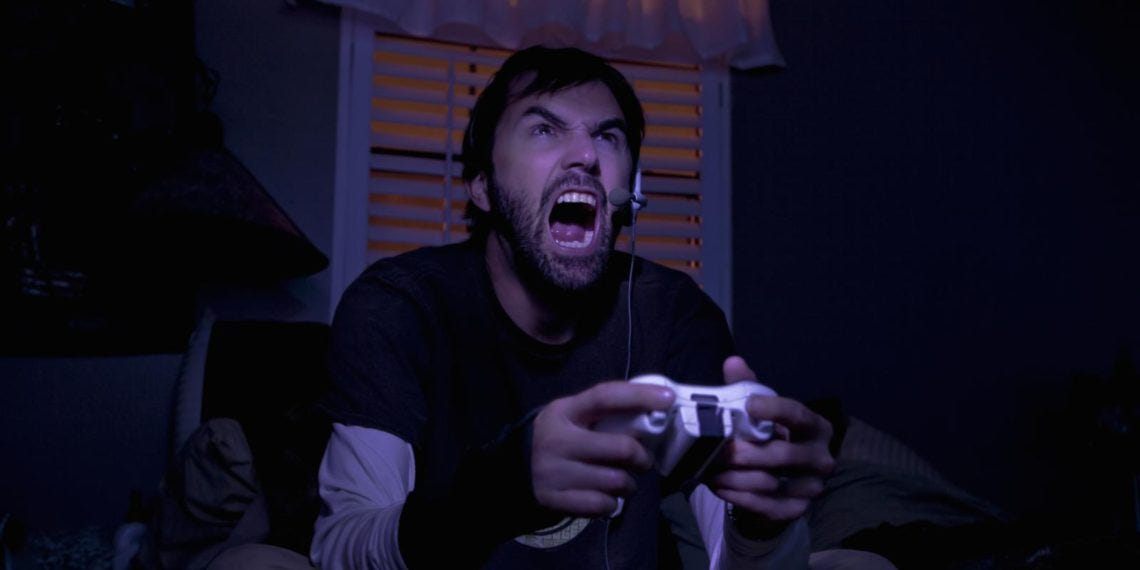Online gaming is one of the most powerful social platforms of the modern age. Millions of players log in every day to connect, compete, and share experiences across the globe. But alongside the fun and teamwork, there’s a darker side — toxicity. From verbal abuse in voice chat to harassment on social media, toxic behavior remains one of gaming’s biggest challenges.
The question is: Can we ever fix it?
Let’s explore where gaming toxicity comes from, why it persists, and what’s being done — by players, developers, and communities — to make online gaming a healthier space for everyone.
What Is Toxicity in Gaming?
Toxicity in online gaming covers a wide range of behaviors. It includes verbal harassment, griefing (intentionally ruining games for others), hate speech, bullying, cheating, and even doxxing (revealing personal information).Visit (무료슬롯) for more details.
While friendly competition and banter are part of gaming culture, toxicity crosses the line when it causes distress, exclusion, or real-world harm.
A 2024 report from the Anti-Defamation League found that over 70% of online gamers had experienced some form of harassment, with nearly half reporting severe abuse. That’s not just a statistic — it’s a clear sign that the problem runs deep.
Why Toxicity Exists
To understand how to fix it, we first need to understand why it happens.
-
Anonymity – Online players often feel shielded by their screen names. Without face-to-face accountability, some act in ways they never would in person.
-
Competitive Pressure – Many online games are built around winning and ranking systems. Frustration, ego, and the fear of losing can push players to lash out.
-
Social Influence – Toxicity spreads easily. When new players see others using slurs or flaming teammates, they may imitate the behavior to fit in or defend themselves.
-
Lack of Moderation – Some platforms still struggle to enforce community guidelines effectively, allowing repeat offenders to continue unchecked.
-
Cultural and Regional Differences – What one player sees as a joke, another may view as offensive. In global communities, misunderstandings can quickly escalate.
Toxicity is not limited to any one game or genre — it’s a cultural issue that touches everything from casual mobile games to high-stakes esports.
The Impact of Toxicity
Toxic environments don’t just ruin the fun — they have serious consequences.
-
Mental Health: Repeated exposure to harassment can cause stress, anxiety, and burnout, especially among younger players.
-
Community Health: Toxicity drives away newcomers, damages player retention, and harms the reputation of gaming communities.
-
Game Integrity: When players quit mid-match or sabotage their own teams, it affects fairness and balance for everyone.
Some talented players even leave competitive scenes altogether because of constant harassment or online abuse. In short, toxicity doesn’t just hurt individuals — it hurts gaming itself.
What Developers Are Doing
Game developers and publishers are finally recognizing that community management is as important as game design. Over the past few years, several major studios have taken action:
-
AI Moderation Tools: Companies like Riot Games and Blizzard use artificial intelligence to detect hate speech and abusive messages in real-time, issuing warnings or bans automatically.
-
Voice Chat Monitoring: Some games now analyze voice communications (using machine learning) to identify toxic behavior without storing personal conversations.
-
Player Reputation Systems: Platforms like Xbox and Overwatch 2 reward good behavior with matchmaking advantages or cosmetic bonuses.
-
Zero-Tolerance Policies: Many esports leagues and streaming platforms now ban players who engage in hate speech or targeted harassment.
These steps aren’t perfect, but they mark a shift — developers are no longer ignoring toxicity; they’re treating it as a design problem that can be solved with innovation and accountability.
What Players Can Do
Developers can’t fix toxicity alone. Players themselves play a crucial role in shaping community culture. Here’s how individuals can help reduce toxic behavior:
-
Mute, Don’t Engage: When someone is being abusive, responding with anger only fuels the fire. Use mute, report, and block features instead.
-
Be the Example: Encourage teammates, congratulate opponents, and show sportsmanship — positive behavior is contagious too.
-
Support New Players: Many toxic encounters happen because beginners feel lost or pressured. Offering help instead of criticism builds stronger communities.
-
Report Consistently: Systems only work when players use them. Reporting bad behavior helps platforms identify repeat offenders.
-
Take Breaks: If you feel tilted or frustrated, step away for a few minutes. Mental resets prevent emotional outbursts.
The more players take responsibility for their actions, the faster gaming culture can evolve into something more welcoming.
Can We Ever Truly Fix It?
Completely eliminating toxicity might be impossible — after all, gaming reflects human behavior, and people aren’t perfect. But we can reduce it dramatically.
It starts with awareness and accountability. Developers must continue refining moderation systems, while communities need to reward empathy and respect. When toxicity becomes socially unacceptable — not just punishable — change will follow naturally.
Gaming has always been about connection. The friendships, laughter, and shared victories are what make online worlds special. By standing together against toxicity, we can make sure those worlds remain open, safe, and fun for everyone.Visit (무료슬롯) for more details.
Conclusion
Toxicity isn’t an unsolvable problem; it’s a cultural challenge that requires teamwork — from developers, players, and the industry alike. Progress is already being made, and each positive interaction contributes to a better community.
The next time you queue up for a match, remember: every word you say shapes someone’s experience. Be the player who makes gaming better — not worse.
Because when we fix toxicity, we don’t just improve games — we improve the people who play them.
